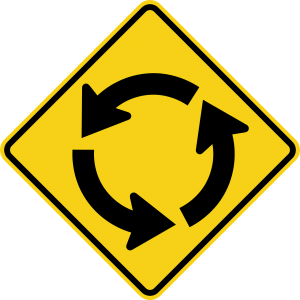“Voice of the Customer” Increases Profits…Lesson from a Christmas Ham
There is strong power market leaders leverage in understanding the current voice of the customer and voice of the market. As markets change the key buying criteria may change and or change its priority in the buying decision making process. In this post I will share how understanding the voice of your customer and market will help your team better understand and prioritize key buying criteria and how this will result in increased sales and profits.
I heard a fun story a few years ago. It seems this couple recently got married, bought a home and wanted to have everyone over for Christmas dinner at their new place. So they went out and bought a huge ham and all the fixings.
The guests arrived and everyone was seated around the dining room table for the holiday feast. Much to the husband’s surprise the wife brought out two Christmas hams, or to be more specific she had cut the ham they bought in half. As the dinner went on the husband had to ask: honey, why did you cut the ham in half then cook it? She quickly replied well that’s how my mom always cooked it, Her mother chimed in, yes and that’s how grandma always cooked it. Grandma smiled and said: I had to cut the ham in half because our oven was so small, but with that huge oven of yours there is no need…
When I work with teams it is not unusual to find “Christmas hams” being cut in half when they no longer need to be.
Does your team clearly understand the buying criteria your buyers must have today to make a buying decision?
Of the criteria buyers are asking for, do you know the most import to least important?
Sales teams often make the mistake of assuming they know, based on how buyers have always bought.
If that is the case in your company, one of two things is happening;
- Sales leads with a dated value proposition and the buyer does not buy
- The buyer buys and the rest of the team scrambles to execute on something that is no longer a key criteria costing your team frustration and margins.
I was asked by a private equity group to help one of the companies in their portfolio struggling with both sales and profitability.
The first step in my business development process is establishing market truth. So I joined this companies’ salespeople on four legged sales calls with key customers. For the most part I was pleased the customers were happy with the products’ performance and (being the new guy) I asked a lot of questions.
One common sales approach all their salespeople were using was promising two week delivery. In this market the competitors typically delivered orders in 8-10 weeks but the company I was helping was offering two weeks. So I had to ask the buyers:
When you decide what vendor to order from, how do you make that decision? Or put another way…what is important when you pick a supplier?
I heard things like;
Quality Products
Good service
Do what they say they will do
Ship products on time
Reports from our engineers the product solved the problems I bought it for
Competitive price
Service after the sale
Warrantee policy
Payment terms
So I asked: if you had to rank the top three, how would that look?
#1 Reports from our engineers the product solved the problems I bought it for
#2 Do what they say they will do, I trust them
#3 Ship products on time so we can meet our commitments on time
What I kept hearing was: “ship on time” but not ship in two weeks.
So being the new guy in the room I had to ask:
How important is it that we ship our products in two weeks?
The buyers all consistently replied that it used to be really important 8-10 years ago when they lacked the buying planning systems that they have today. “Back then we were kind of ordering blind based on the past, however today our systems give us buyers a look into what production plans in the future and we order appropriately.”
How far out of a view are you able to see?
I can see as far into the future as I want, but I typically look 4-6 weeks out.
So if we shipped you product in 4-5 weeks you would be happy?
Yes, as long as it shipped and arrived on time.
We learned other things like new products our competitors were about to launch, problems our competitors were having with one particular product line and so on. We learned the warehouse employees at a number of the OEM accounts did not like the pallets we were shipping on because they did not fit on the common rack designs.
After spending over 30 days on the road in front of customers we gathered how buyers were buying today and what they needed to buy today. We gathered very useful information calling on prospects about how they buy, the steps they go though and where and how they search. For example they shared the key words they used when searching for solutions like ours and none of them were on our web site.
I presented the findings of our (VoC) work to the private equity firm and the management team.
I had to ask: In each of the calls I went on, sales was promising two weeks delivery, but none of the customers were requiring that anymore? When did that start?
The previous owner identified our ability to ship quickly as how we could win business from the competitors and that is how we have done things for the last 12 years…. (a Christmas ham , cut in half!)
As you can image, operations and quality were thrilled to hear buyers no longer needed two-week delivery.
To execute two-week delivery this company had a large amount of inventory and whip in hand since most of their vendors for the electrical components required 6 weeks and the glass vendors were 8-10 weeks.
As we kept peeling this onion we discovered;
- Over 40 % of orders required overtime at time and a half assembly labor
- To meet two weeks we were expediting component parts from New Jersey and paying overnight freight charges
- To make our deliveries in two weeks as promised we were paying for overnight delivery more often than anyone realized
- Because we worked people overtime we saw a direct correlation to an increase in quality rejects during pre-shipment testing when our assembly workers worked overtime
- Since we had to order and store the glass components, they were often damaged and thrown away from moving them around the plant
- We had to buy a truckload of the pallets we were using and we paid a premium for them. It seems the original owner designed this unique configuration to maximize the number of master cartons we could ship per skid and then designed our bin rack system to accommodate them
- We occupied a large warehouse with expensive rent based on our perceived need for so much inventory, and proximity to the previous owners home
As a team we ranked what our buyers valued most today, and we created a number of projects to better serve our customers while reducing costs (and often frustrations)
Over 12 months our quality failure occurrences dropped to almost zero and our on time vendor sore cards improved significantly at our two largest accounts. We moved to a much smaller warehouse and we started using standard pallets that fit our customers’ racks. Standard pallets were a much lower cost and we bought them just in time not tying up cash in slow moving pallet inventory. The result of our voice of the market work was sales increased by 125%, but profits increased over 20%.
When was the last time you captured the voice of your customers?
Could your team be cutting a Christmas ham in half for no reason today?
How would your buyers rank their buying criteria? Do you know?
Could your team be jumping through flaming hoops customers no longer value?
How excited would your owners and investors be to realize a 20% profit increase?
Capturing and leveraging the voice of your customer helps your team understand what is important to your buyers, how they buy, what they need to buy and how they shop…TODAY.
Sales teams that “assume” buyers are still buying like they have for 10-15-20 years are losing sales they could have won, and or losing margins they could have enjoyed.
Market leaders leverage voice of customer to increase sales and profits.
Why not understand the voice of your customers today and leverage that information to increase sales and profits?
I guess you can “assume” your team knows, but you know what they say assuming makes you and me…




